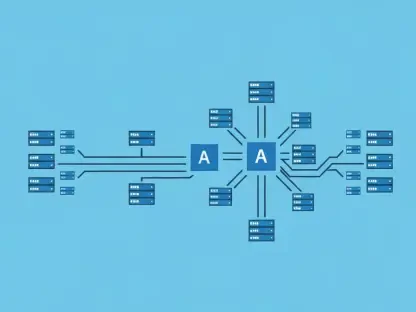The persistent challenge facing the integration of DevSecOps within application development lies in balancing security considerations against pressing deadlines and limited resources. A recent survey of 250 senior IT and security leaders across North America highlights this struggle, with a significant number of organizations admitting to releasing insecure code to meet deadlines. The pressure of timely delivery often relegates security to a secondary status, which poses substantial risks to overall cybersecurity strategies. This situation raises fundamental questions about how security can be more thoroughly integrated into every stage of the development cycle.
The Security Dilemma
Balancing Deadlines with Security Needs
A remarkable 62% of surveyed organizations confess to deploying software with known security vulnerabilities, a move driven by the need to meet tight schedules. This practice underscores ongoing tension between development speed and robust security measures. Although quick product releases propel competitiveness, they hinge on the dangerous compromise of security standards. Consequently, this approach puts data at risk and increases the potential for breaches once the product is live. The fundamental issue lies in the decision of when and how security is incorporated into the development process.
Insufficient Early Security Involvement
Typically, security involvement is delayed until the latter stages of development, with only 36% of organizations engaging security teams during the planning phase. This procrastinated engagement often results in reactive rather than preventive measures. Security lapses tend to be identified during deployment or not until post-release, creating a backlog of vulnerabilities that are both time-consuming and costly to rectify. There is an emerging consensus that integrating security from the outset and turning it into an intrinsic part of the development lifecycle could vastly mitigate these risks. Nevertheless, achieving this necessitates a cultural shift within organizations, stressing the importance of sufficient resource allocation and prioritization of security.
Financial and Operational Pressures
Underfunding of Application Security
Despite recognition of security as a critical concern, many organizations allocate only a fraction of their security budgets—typically 11–20%—to application security. This underfunding signifies an imbalance in resource distribution, which hampers the ability to adequately address security vulnerabilities. Given the financial constraints, teams are often forced to make tough choices about which issues to prioritize, frequently leaving significant risks unmitigated. This budgetary limitation is compounded by high-stress levels among developers, who are worried about job security due to the looming threat of outsourcing security tasks.
Outsourcing Security Functions
The open consideration of outsourcing, driven by talent shortages and cost pressures, represents a significant shift in how organizations view security management. More than half of respondents acknowledge having addressed top security threats, yet they remain frustrated with false positives generated by security tools. Outsourcing potentially offers a solution to these challenges by bringing in external expertise to manage security more efficiently. However, this approach also raises concerns about control and the strategic alignment of outsourced teams with internal goals. It invites a broader discussion on how organizations can optimize the security functions they retain while leveraging external resources effectively.
Shared Responsibility and Future Directions
Transition to Shared Security Responsibility
An intriguing trend surfaces with about 50% of organizations reporting that security funding is now a shared responsibility between application development teams and IT departments. This model encourages collaboration and ensures that security considerations are consistently embedded throughout the development process. Such integration demands a strategic commitment to fostering interdepartmental cooperation and aligning security objectives with business goals. As these collaborative models gain traction, organizations must tailor their frameworks to fit unique challenges and industry-specific requirements.
Focusing on Forward-Looking Security Investment
One of the ongoing challenges in incorporating DevSecOps into application development is maintaining a balance between security and demanding deadlines compounded by limited resources. A recent survey involving 250 senior IT and security executives from across North America underscores this issue. Many of these organizations admit to compromising and releasing code that may not be secure to meet deadline pressures. The urgency of delivering products on time often results in security being pushed to the background. This compromise can seriously jeopardize overall cybersecurity efforts, making applications vulnerable to attacks. The main concern is how to successfully integrate security measures into every phase of the development process, ensuring they are prioritized accordingly. Organizations must explore strategies to embed security more effectively, not as a secondary consideration but as a core component. This means introducing security awareness and practices from the outset of development plans and maintaining them throughout the lifecycle.









